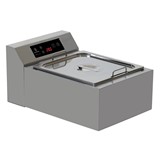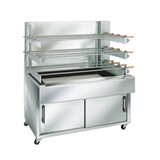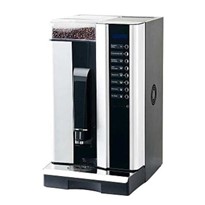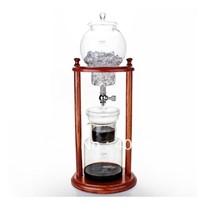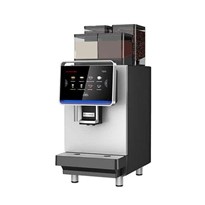Two terms you’re likely to come across if you enjoy drinking coffee are “coffee blends” and “single origin coffees.”
In this article, we aim to debunk lots of myths associated around these terms and help you understand the approach to coffee blends.
This will be important as the majority of coffee you find in the coffee market as a whole is blended in some way. This is true whether you are at an espresso bar serving traditional espresso drinks, or in a retail outlet buying from the shelves for use at home.
So, first things first, what exactly is a coffee blend?
A coffee blend is a coffee that is made up of coffee beans originating from more than one place. “Place” here does not mean just different countries. This can mean a very micro-level division of place such as varying altitudes on the same producing farm, or it can mean different regions of the same country or different small areas within the same producing region. From here, as you can guess, coffee blends come in many shapes and forms. From commercial coffee blends found in coffee chains, to ‘single origin’ coffees that one assumes are only one type of coffee, the phrase “coffee blend” is all-encompassing, though this is often miscommunicated.
A coffee blend that is produced at the roastery can be seen almost like a recipe where combining different flavours to strike overall balance, while producing complexity of flavour. Blends are where we create the perfect taste potential for a set market preference / specific customer demand / bespoke brewing method, allowing the end user to brew it in an accessible way.
We ensure we include all of the components of our blends on our bag labels. Each coffee origin, specific farm / processing station name and the country of origin are detailed to allow consumers full transparency. The different origins that make up a blend are on the label, to help customers understand what has gone into that specific coffee blend.
Coffee Blends Vs Single Origins
In contrast to a coffee blend, a single origin coffee comes from just one “origin”. The interpretation of “origin” varies depending on who is selling the coffee. Many coffee chains will call a coffee a single origin if all of the component beans come from just one country. The problem with defining a single origin by country, is the fact most coffee producing countries will include varying micro-climates and conditions. This means by lumping them altogether you fail to celebrate the specific nuances and subtle flavours, distinctive to a certain farm or co-operative.
These coffees are often highlighted and celebrated within the speciality coffee community as they help showcase the purist flavours from specific coffee beans.
For example, Colombia has lots of micro-climates within the country, creating at least 7 or 8 flavour profiles. This means we could produce countless single origin coffees just from Colombia that taste completely different. When we call something a single origin, it means all of the coffee beans come from traceable farms or co-operatives.
Popular Coffee Blends
Our most popular blend is our house blend Keep It Dark.
We have put a lot of work into creating our house blend over the last few years, tinkering with components and percentages until we think it is just right. Our aim has been to create a blend that embraces many of the characteristics of a traditional espresso blend but that embodies principles of specialty coffee working with amazing producers from across the tropics, profiling and roasting their beans to a medium level before carefully blending them to create a characterful cup.
Coffee Blends for Espresso
Espresso is a short and highly complex beverage to begin with, but is most often diluted for service with water, milk and/or other things. When creating an espresso blend for service, we need to think about how that blend will ultimately be served and tasted, and work with flavour from there backwards. It’s almost reverse-engineered with a clear frame in mind for the ultimate flavour profile that we need to create.
We think in terms of the varieties and categories of flavour a coffee can offer when blending, along with that coffee’s level of body and perceived strength. This helps us to build the character of an espresso blend around the most important factors that people respond to.
With espresso, a big factor is adjusting the balance of flavours to ensure that it tastes fully balanced as both a black coffee and in milk-based beverages, given that milky drinks are the majority of drinks consumed in cafes. Why does our house blend feature flavour notes of chocolate, praline and caramel in it? Those flavours are fantastic when tasted with or without milk, and most importantly are positively impacted by the addition of milk, rather than becoming imbalanced or overly subdued.
Coffee for Filter
More often than not with filter coffees, we like to use single origin coffees because filter coffee is more commonly consumed black by coffee aficionados, or at the very least with less milk than we tend to find in espresso beverages. This means less is interacting with coffee flavour or distracting the palate from the flavour offered by coffee and coffee alone.
As you can likely tell, this means you’ll taste uninterrupted coffee, so to speak. For this reason, we tend to favour showing off those single origin coffees that may have only a limited set of flavours (for example they may be predominantly stone fruit or tropical flavours) because they don’t actually need to be balanced out if they are sold with that understanding in mind. For roasters and tasters, these can be some of the most impressive displays of what one instance of coffee (usually just one varietal) can offer without being blended at all to ‘boost’ other characteristics.
Having said that, it is important to mention that single origin coffees are not the be all and end all of filter coffee. By lightly roasting our coffee beans, we work with the range of intrinsically present flavours that a coffee offers, and by buying high quality, speciality grade beans, we only give ourselves the opportunity to show off immensely positive flavours. From this it is easy to see why you could essentially look to try any of our coffees (whether it is labelled blend or single origin) as a filter beverage – undiluted, unsweetened and not tampered with – and appreciate interesting flavours from it. It can be a great way to discover your real preferences too.
How to Create a Coffee Blend
Creating the perfect coffee blend largely depending on your ability to grade and score individual coffees. This is where it comes in to help identify what kind of flavours a certain type of coffee bean would contribute to a blend. This isn’t an easy skill, and involves training and Q-Grading qualifications.
We blend all our coffees after roasting. This is somewhat unusual in commercial operations, due to it being more time-consuming. However, for maximising the potential of each bean going into a blend, it’s of paramount importance. This allows us to roast to achieve the correct rate of flavour extraction from each coffee going into a blend. This means that when the end user brews the coffee, they get each bean brewing at the correct rate alongside each other, meaning none of the varietals included in a blend end up significantly over-brewed or under-brewed.
We feel it is the best way to ensure we get the most out of every bean used in a blend. Coffee beans end up at our roastery with different overall shapes, sizes, densities and processing methods, and those characteristics (along with each coffee’s age, its journey to AUS and its life post-harvest but pre-export) mean that each needs to be roasted differently anyway. So, if you are to blend all the beans together before roasting, you may lose certain flavours from some of the beans.
Creating a coffee blend is a careful procedure and you can’t simply throw some different coffees together and hope it tastes nice. Instead it’s a very scientific approach of working with flavour profiles and understand how to combine them to create a desired end-taste.
If you’d like to get learn more about this part of coffee, then we’d recommend join us on one of our coffee courses. From beginner home brewing courses, to sensory skills courses, we can help you develop your understanding of coffee profiles further.


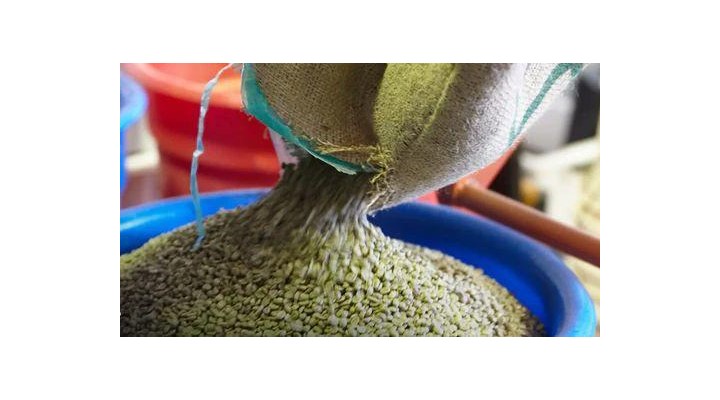
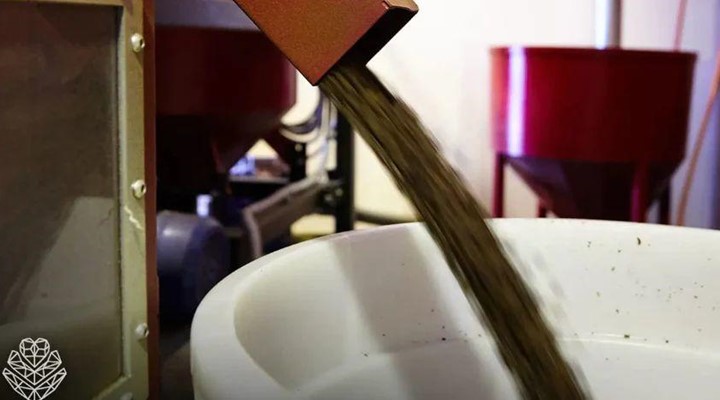



-160x160-state_article-rel-cat.png)

-160x160-state_article-rel-cat.png)






